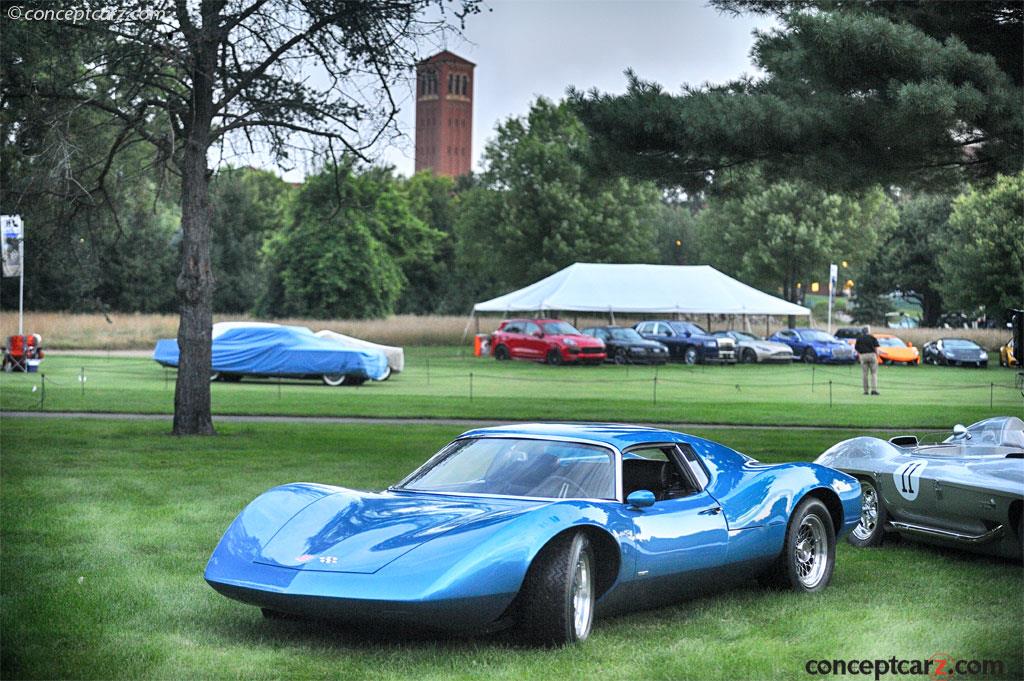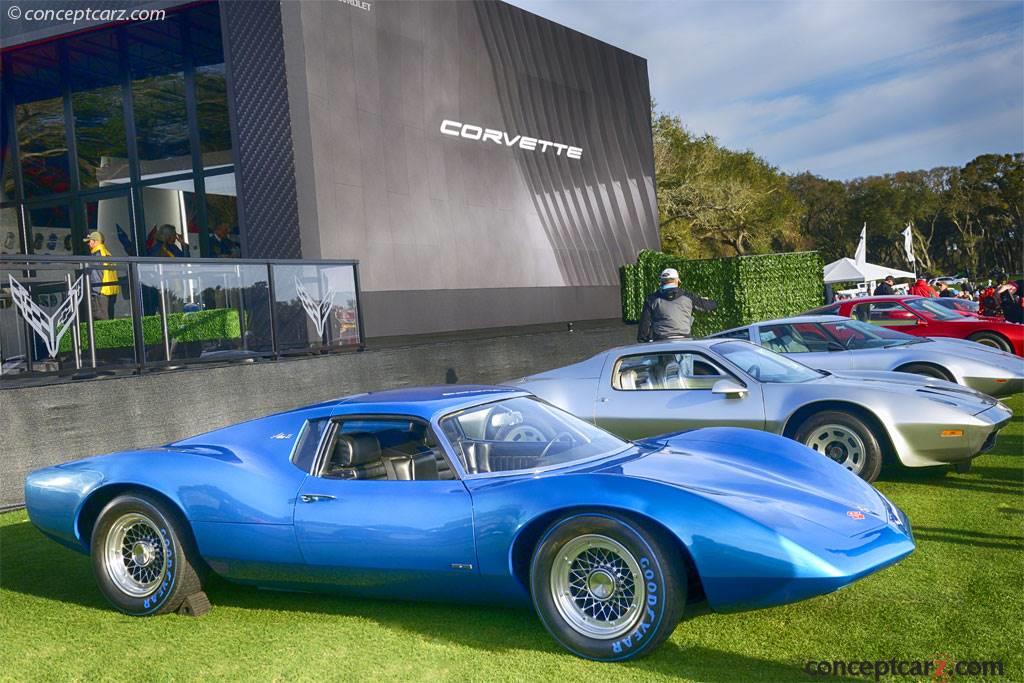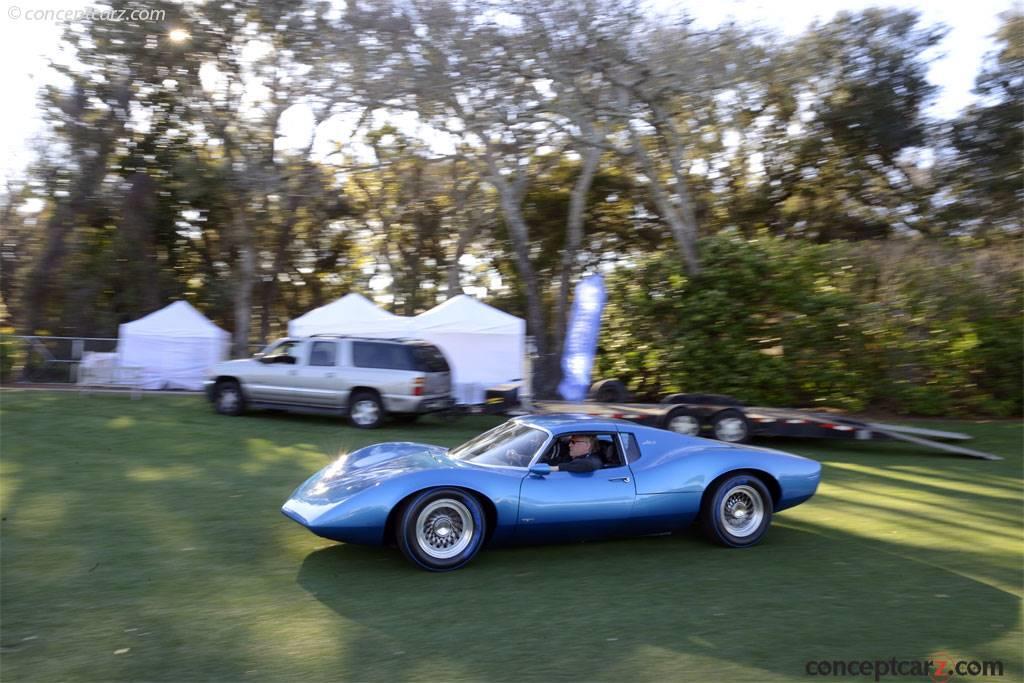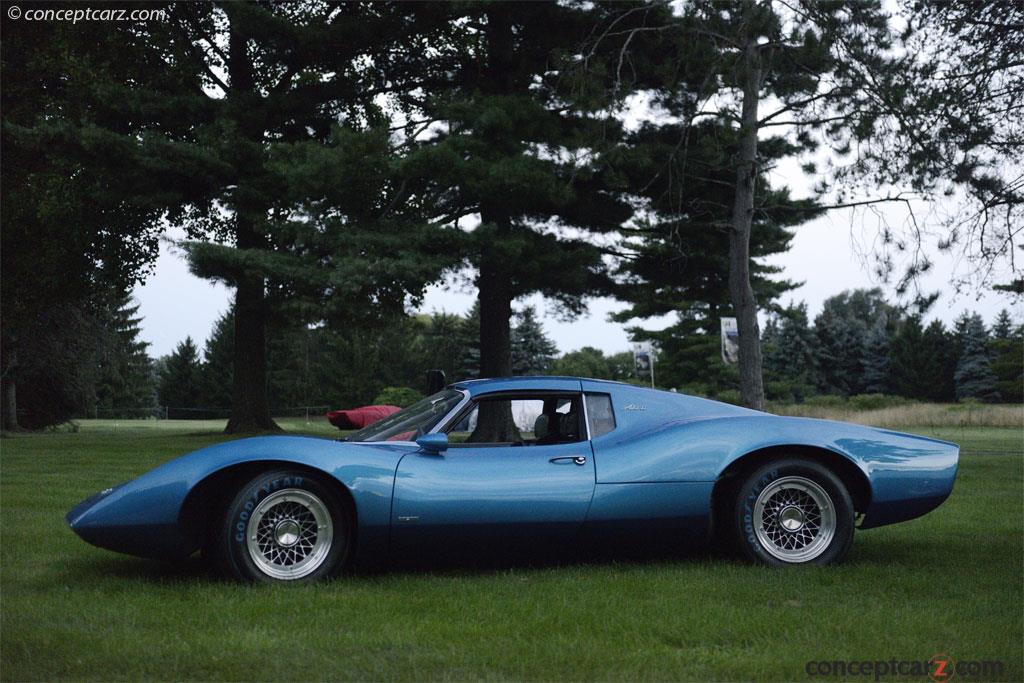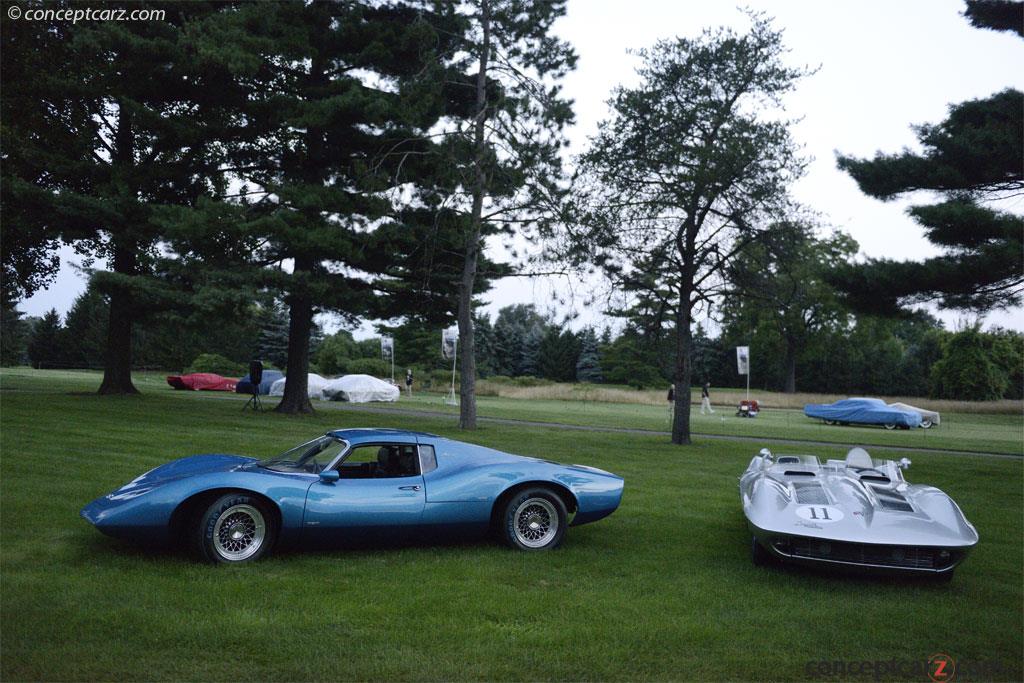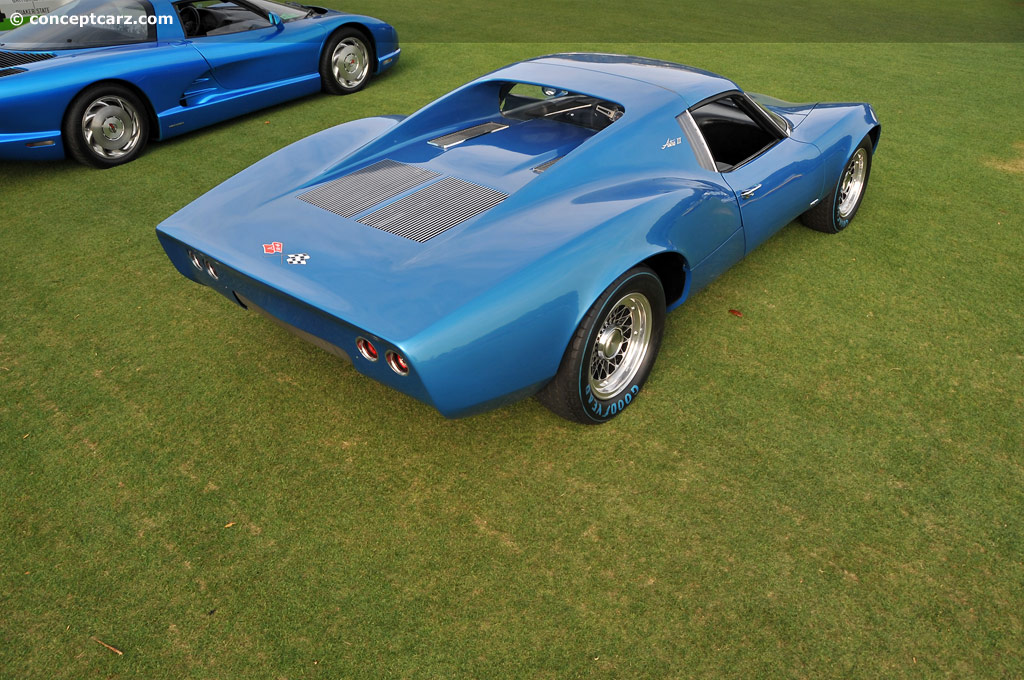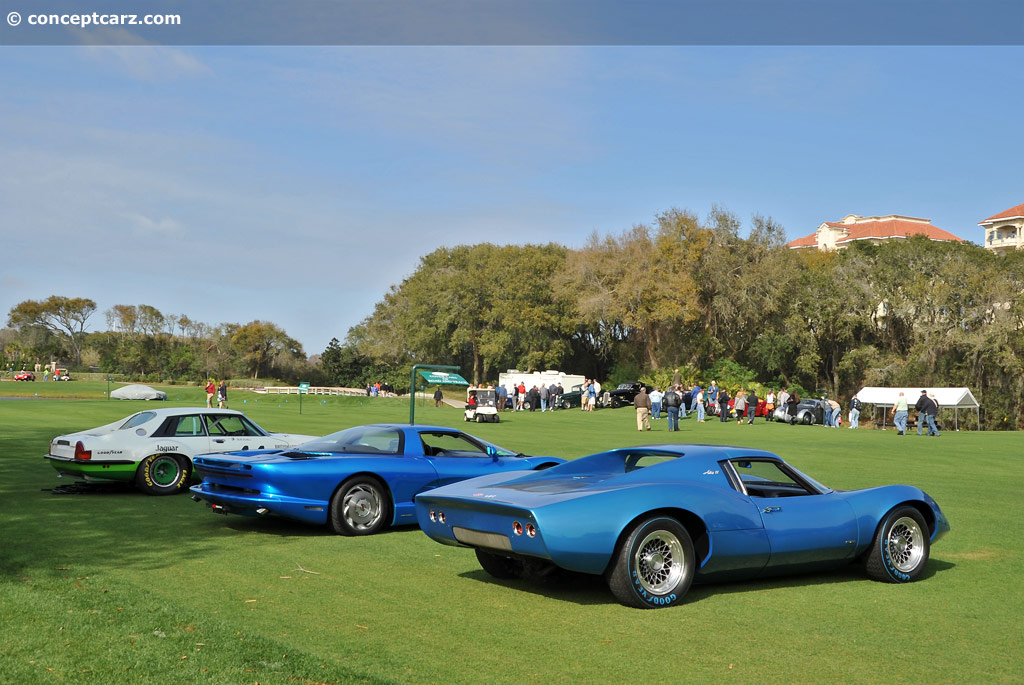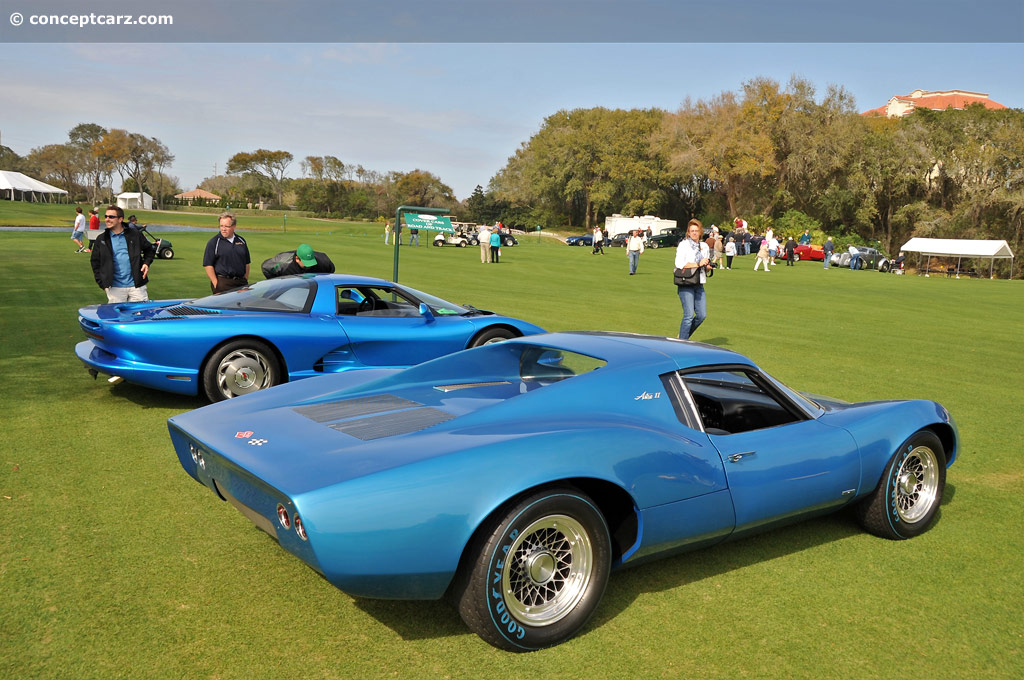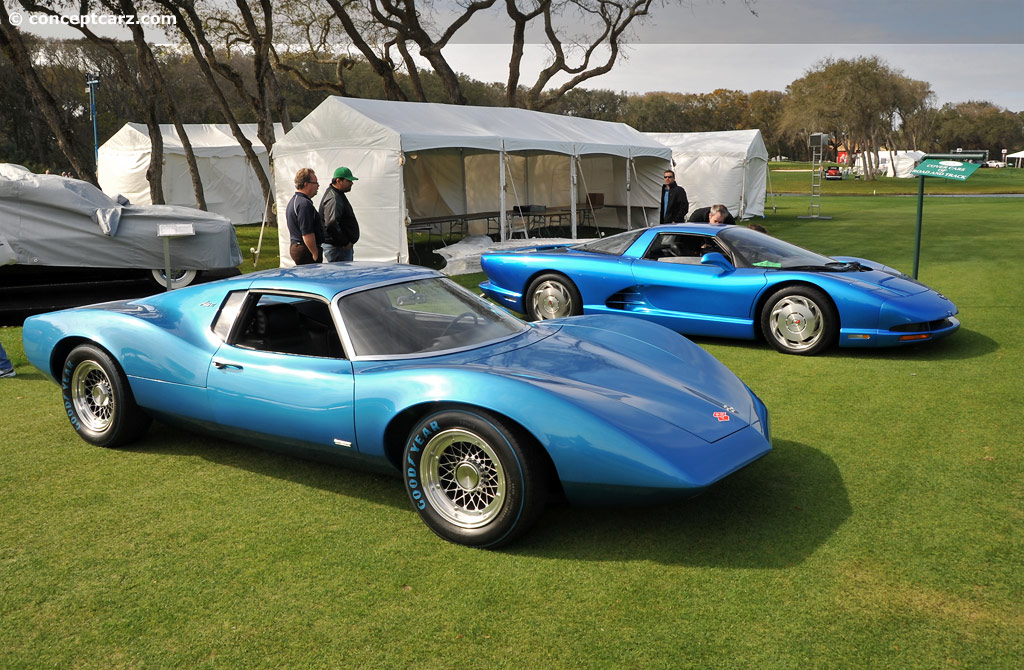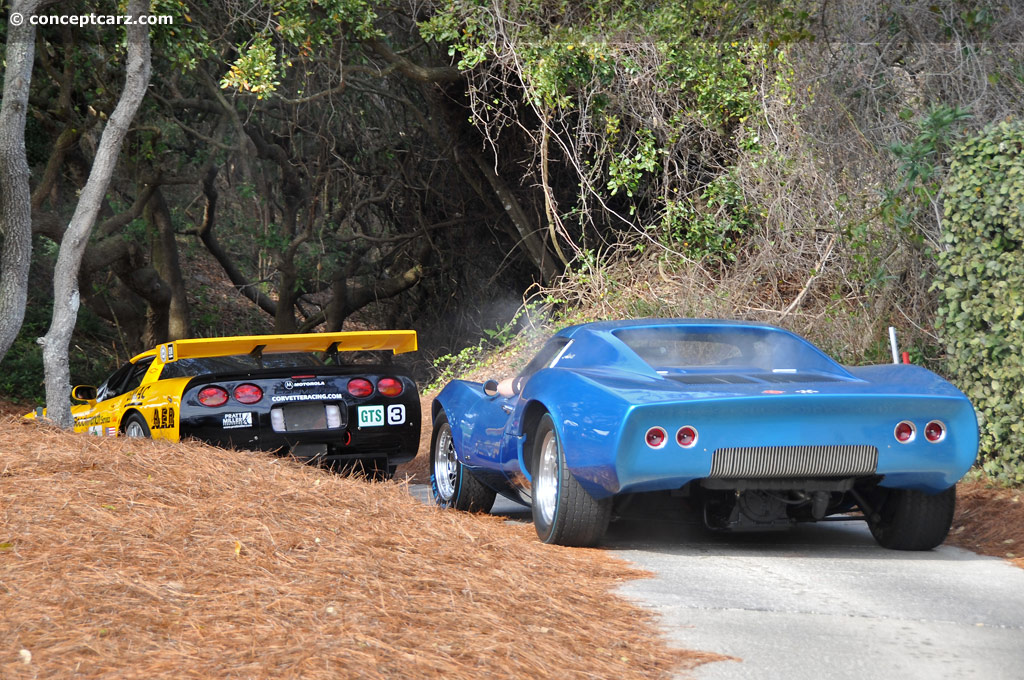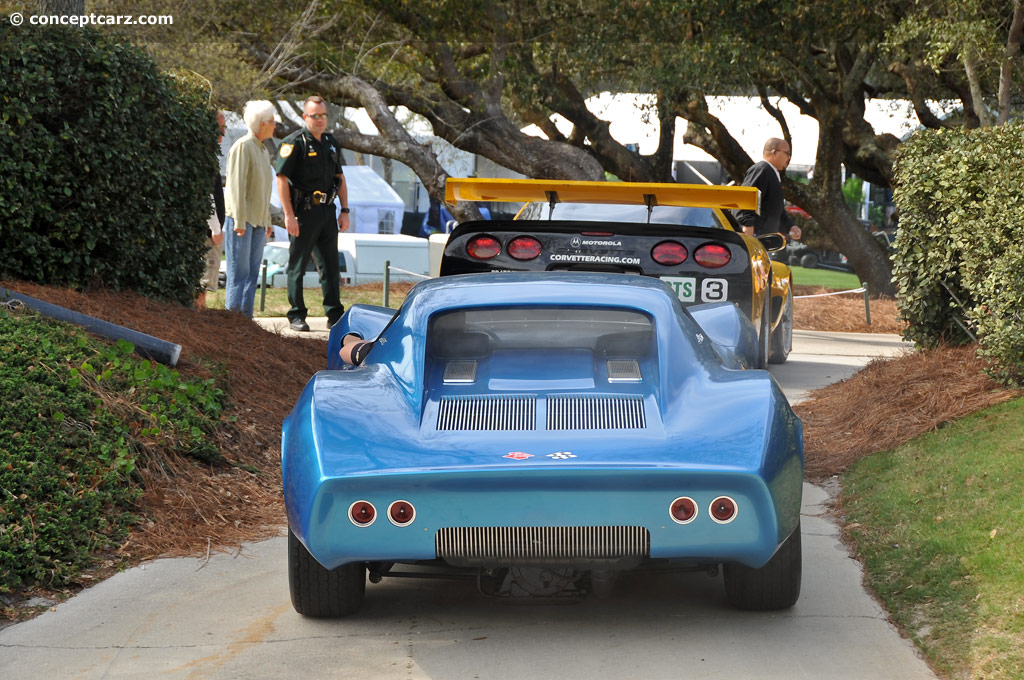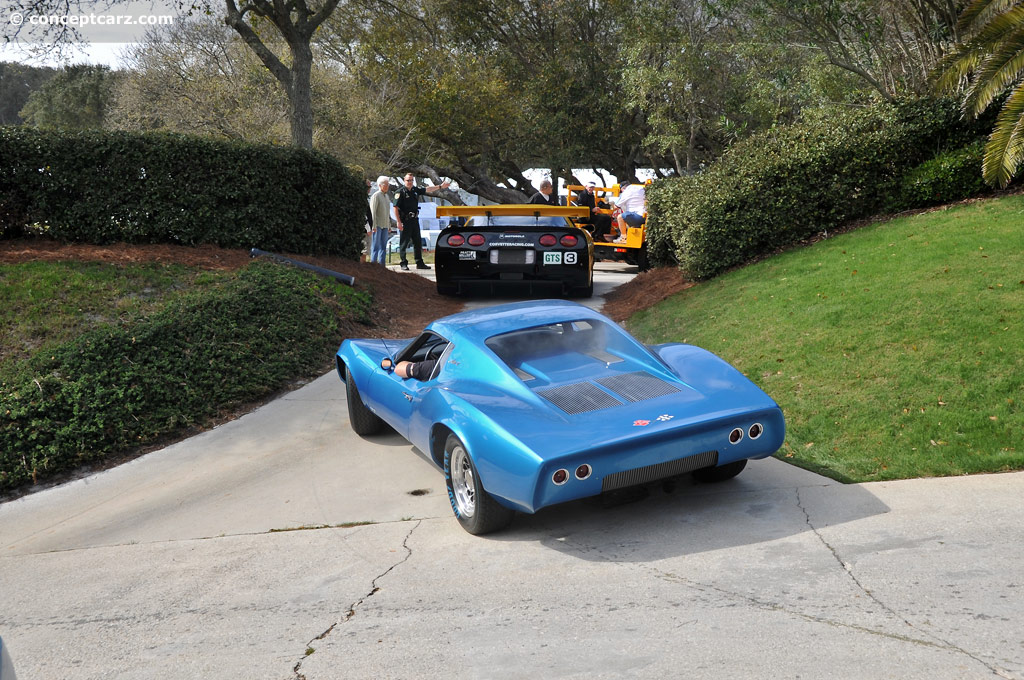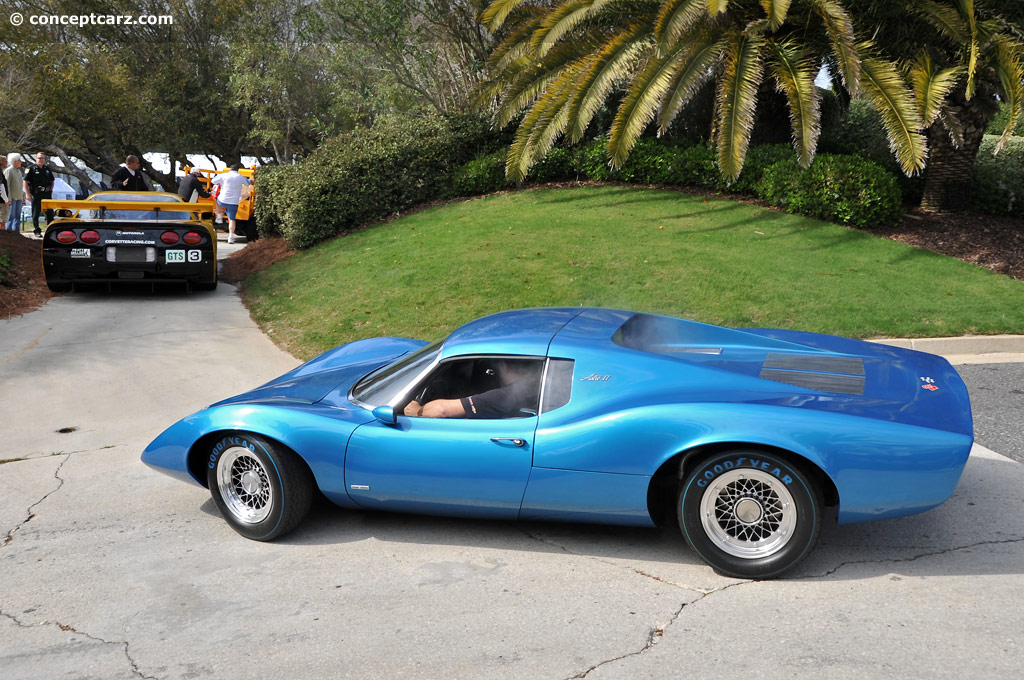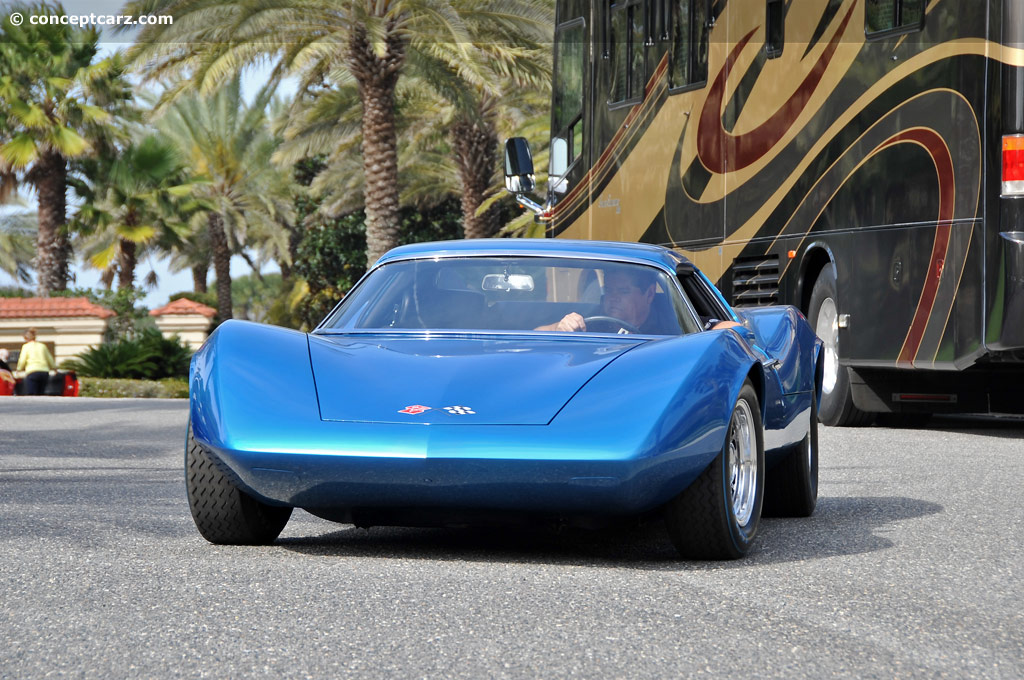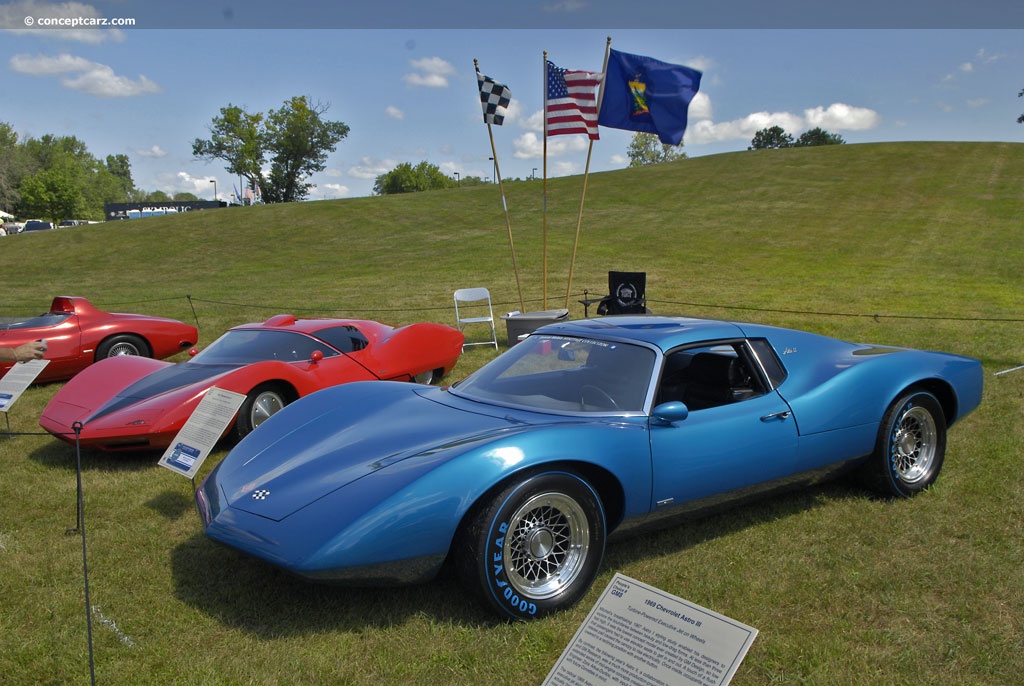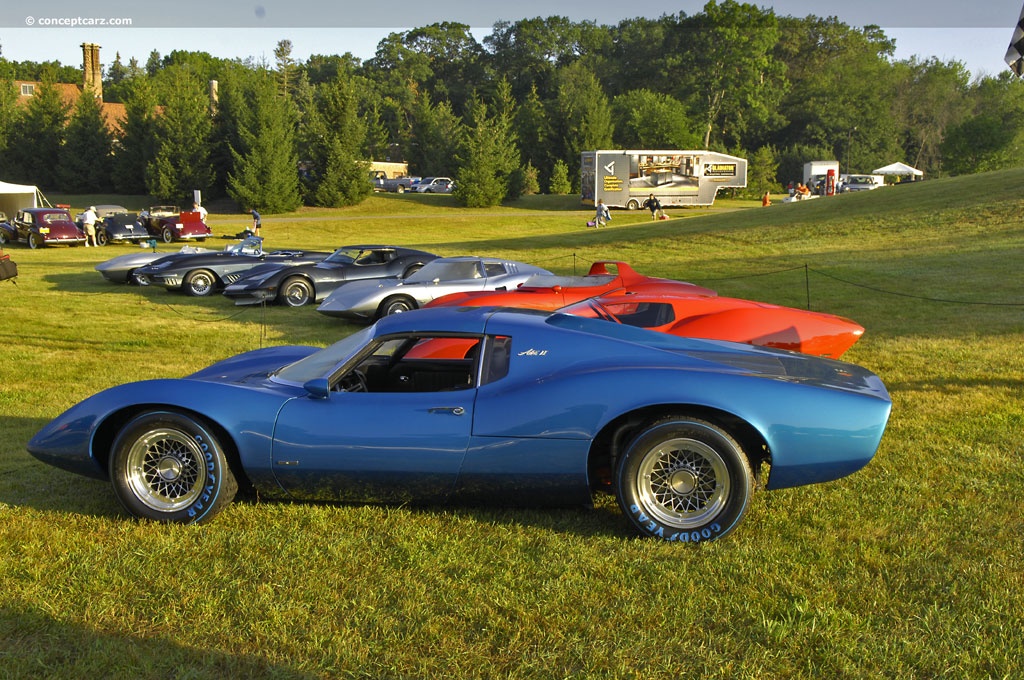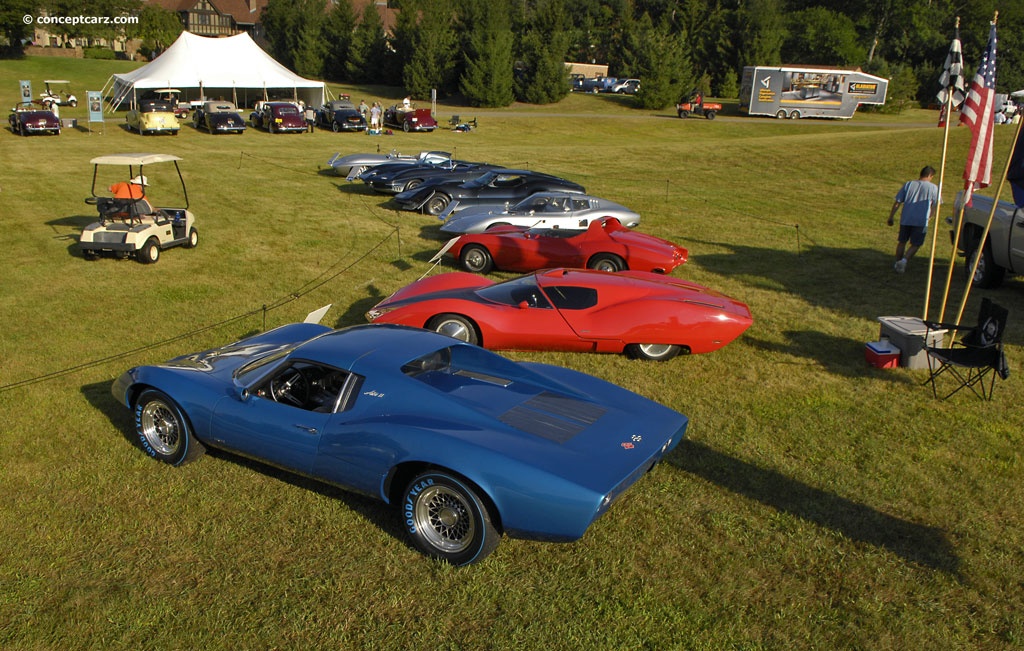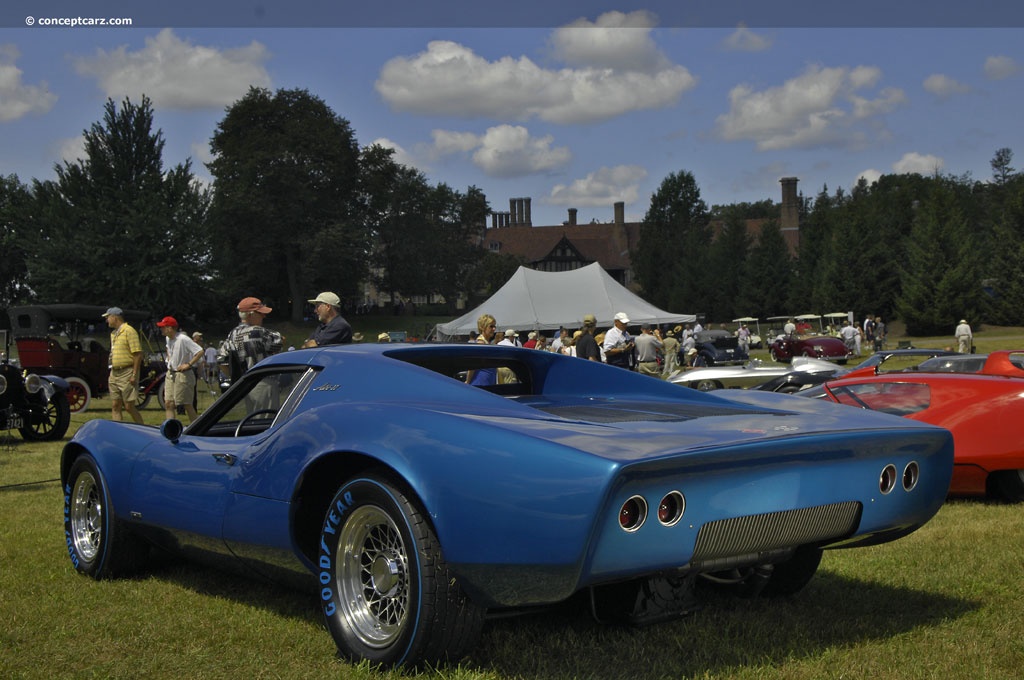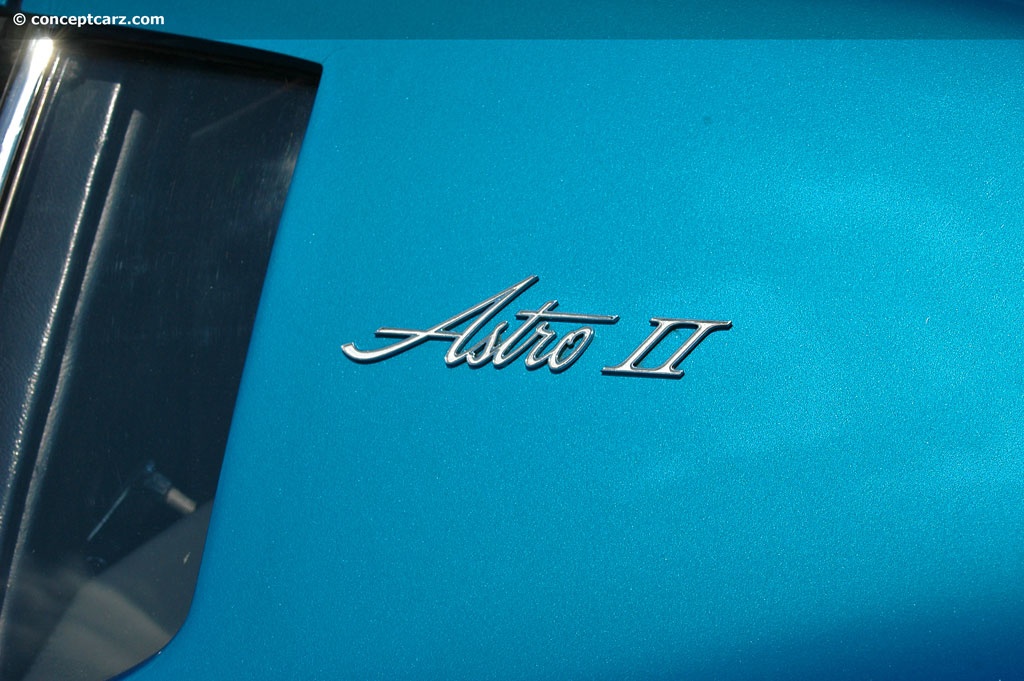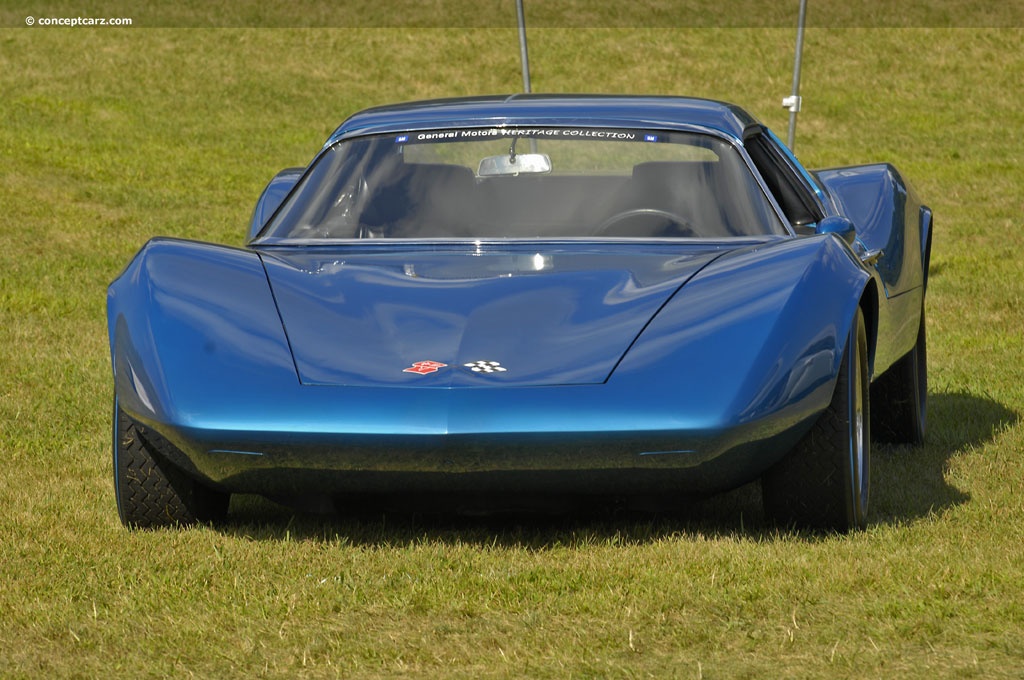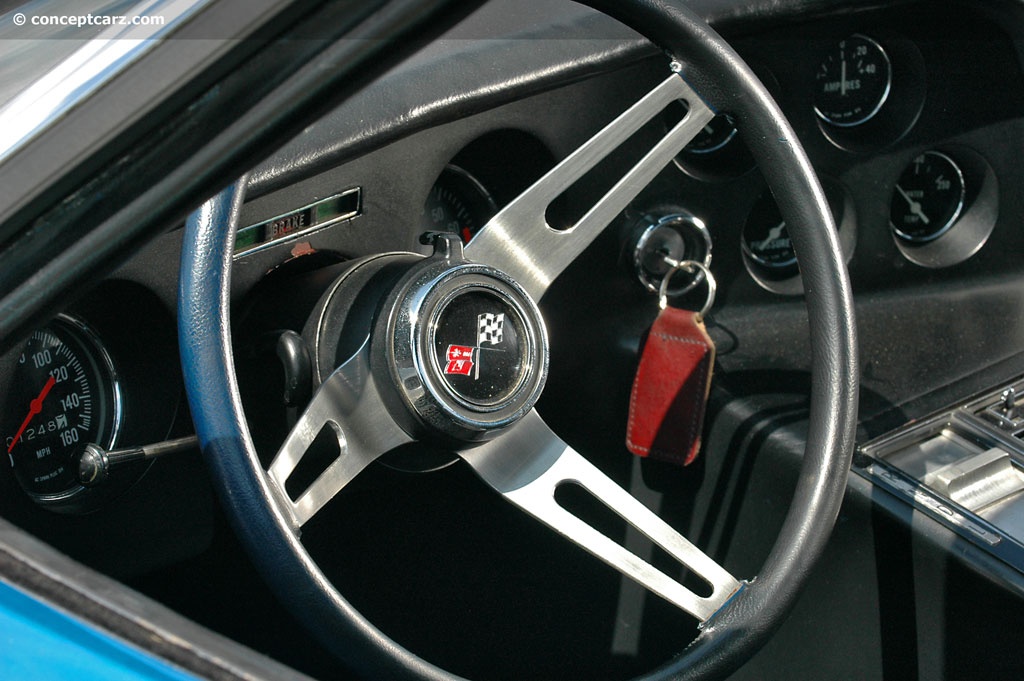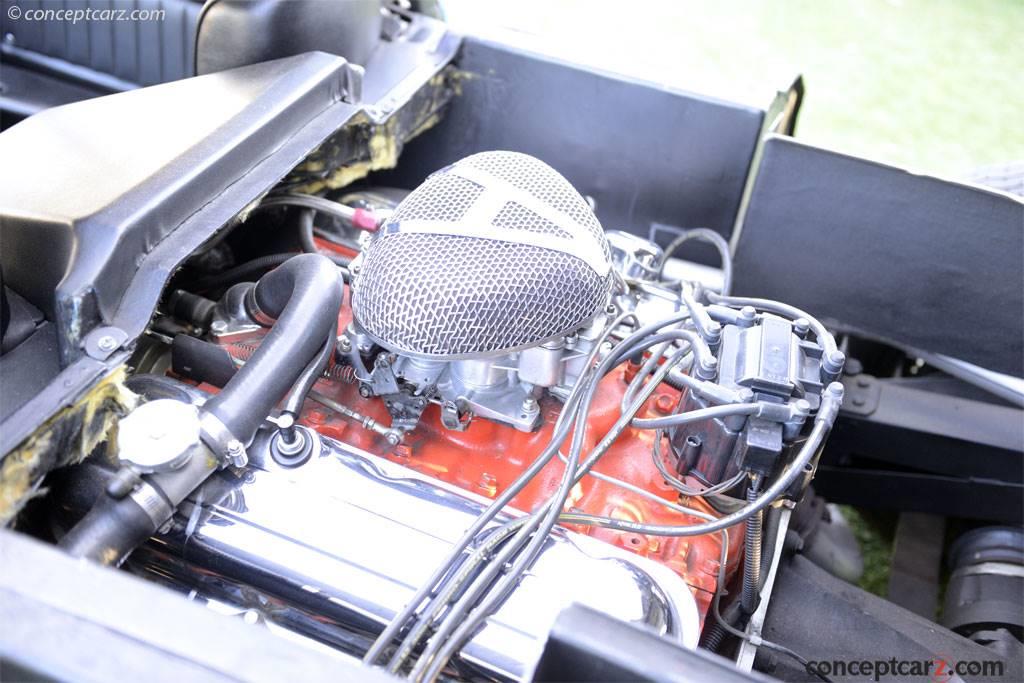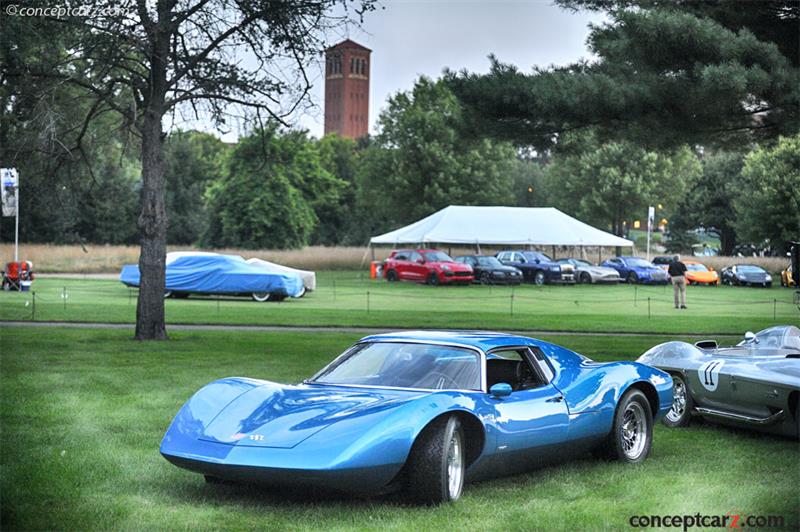Image credit: © conceptcarz.com (Reproduction Or reuse prohibited).
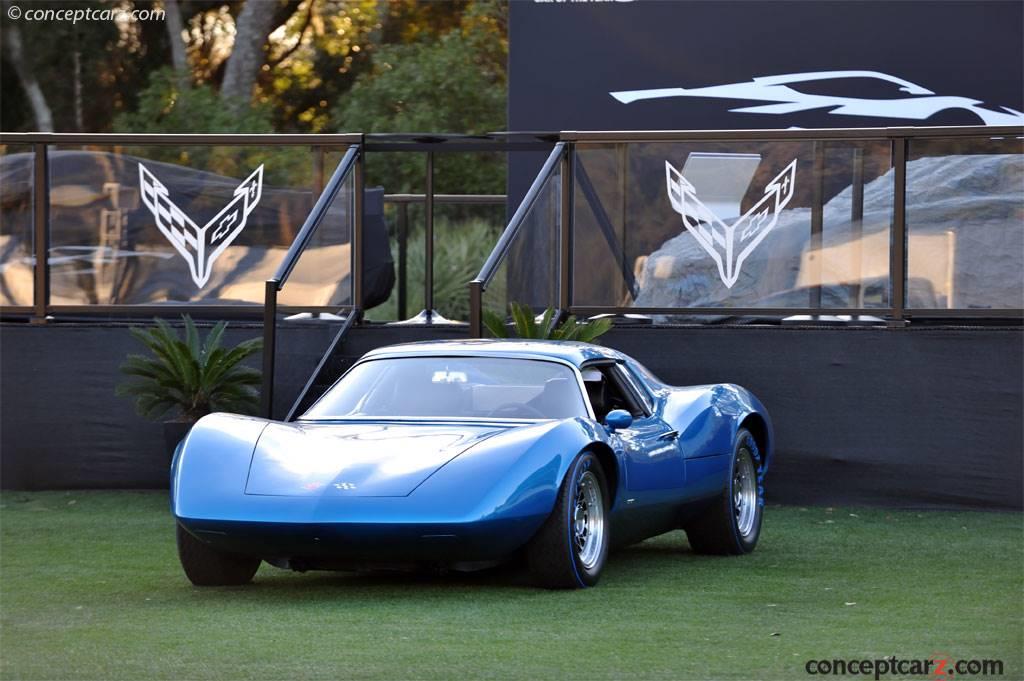
1968 Chevrolet Astro II Navigation
As far back as the 1960's Arkus Duntov was convinced that mid-engine was the only way to go for Corvette to compete effectively in styling, image and performance against the top European sports cars. He relentlessly lobbied Chevrolet and GM management for approval to bring a mid-engine Corvette to production introducing several prototypes to no avail.
After Ford introduced their street version of their mid-engine GT40, Chevrolet designers went right to work on their own mid-engine Corvette. After 11 months, the Astro II was shown, immediately initiating a blizzard of speculation asking the question - 'Is this the next Corvette?'
Mitchell's breathtaking 1967 Astro I styling study enabled his designers to explore the boundaries between beauty and low-drag forms. At less than three feet high, it was the lowest concept model ever created by GM design, so low that passengers had to use elevator seats to get in and out. A touch of a flush release pad caused the canopy to rise electrically. Once inside, occupants were lowered to a reclining position with another button.
By contrast, the following year's Astro II, a collaboration between GM Design and GM Research, was a much more production-practical sports car. One of an extended series of mid-engine concepts created by Mitchell and Corvette Chief Engineer Zora Arkus-Duntov, with input from Larry Shinoda, it was designed with future Corvettes in mind. It was a study in aerodynamics to see how slippery a Corvette could be, with actual doors to access the passenger compartment, a front storage compartment and a rear hatch that lifted for engine compartment access.
Code named XP-880 (Experimental Prototype), design was tasked to Larry Shinoda's Chevy 3 Studio and designers George Hubbach, Randy Wittine and Allen Young. Their proposal was conceived to comfortably carry two passengers and their cargo with the engine and radiator placed in the rear of the vehicle freeing the front compartment for storage. Chevrolet R&D under the direction of Frank Winchell provided the mechanicals. Built with as many off-the-shelf parts as possible, the car was powered by a liquid-cooled version of Chevrolet's 390 hp Mark IV big block engine. Sporting the Firefrost Blue paint desired by Bill Mitchell and Chevrolet General Manager Pete Estes, the Astro II debuted to the public at the 1968 New York Auto Show.
Still, looking very exotic for its time, with a tilt-back rear and a tilt-forward front section, Astro II's styling screamed 'Corvette,' and two of its design features were later applied to production Corvettes. For 1973, when new federal bumper requirements kicked in, most American cars got big chrome front bumpers, Corvette instead got the much more attractive body-color Astro treatment. Then for 1974, the Corvette's tail was restyled to look like Astro II's.
By using off-the-shelf parts, the designers were able to deliver the car quickly and at a relatively low cost. This car used an out of production 1963 Pontiac tempest with a two-speed transaxle. When the transaxle proved too weak, the system was redesigned. Rolling on G70x15 tires on spoked cast-aluminum wheels, it boasted four-wheel disc brakes and could generate an incredible 1g of cornering grip. Despite its built-in design weakness, the Astro II was an interesting effort. Internally designated XP880, GM says this Astro II 'almost made it to the showroom.'
The Astro II used a central backbone frame and thick doors that housed safety beams. The 20-gallon fuel cell was located in the center of the frame. The engine, suspension and drivetrain were all attached to the central frame. With a 427 engine, this made the car more like a Can-Am racer than a streetcar.
The radical 1969 Astro III is a two-passenger experimental car resembling an executive jet aircraft, even down to its 'tricycle' wheel arrangement....though it actually has four wheels, with the front pair placed close together under its nose. Powered by a Model 250-C18 gas turbine engine, it was envisioned as a high-performance vehicle suited for future restricted access or system-controlled highways. A power canopy moves forward and upward for entry, and rear vision is provided by closed-circuit TV with a screen on the center console.
After Ford introduced their street version of their mid-engine GT40, Chevrolet designers went right to work on their own mid-engine Corvette. After 11 months, the Astro II was shown, immediately initiating a blizzard of speculation asking the question - 'Is this the next Corvette?'
Mitchell's breathtaking 1967 Astro I styling study enabled his designers to explore the boundaries between beauty and low-drag forms. At less than three feet high, it was the lowest concept model ever created by GM design, so low that passengers had to use elevator seats to get in and out. A touch of a flush release pad caused the canopy to rise electrically. Once inside, occupants were lowered to a reclining position with another button.
By contrast, the following year's Astro II, a collaboration between GM Design and GM Research, was a much more production-practical sports car. One of an extended series of mid-engine concepts created by Mitchell and Corvette Chief Engineer Zora Arkus-Duntov, with input from Larry Shinoda, it was designed with future Corvettes in mind. It was a study in aerodynamics to see how slippery a Corvette could be, with actual doors to access the passenger compartment, a front storage compartment and a rear hatch that lifted for engine compartment access.
Code named XP-880 (Experimental Prototype), design was tasked to Larry Shinoda's Chevy 3 Studio and designers George Hubbach, Randy Wittine and Allen Young. Their proposal was conceived to comfortably carry two passengers and their cargo with the engine and radiator placed in the rear of the vehicle freeing the front compartment for storage. Chevrolet R&D under the direction of Frank Winchell provided the mechanicals. Built with as many off-the-shelf parts as possible, the car was powered by a liquid-cooled version of Chevrolet's 390 hp Mark IV big block engine. Sporting the Firefrost Blue paint desired by Bill Mitchell and Chevrolet General Manager Pete Estes, the Astro II debuted to the public at the 1968 New York Auto Show.
Still, looking very exotic for its time, with a tilt-back rear and a tilt-forward front section, Astro II's styling screamed 'Corvette,' and two of its design features were later applied to production Corvettes. For 1973, when new federal bumper requirements kicked in, most American cars got big chrome front bumpers, Corvette instead got the much more attractive body-color Astro treatment. Then for 1974, the Corvette's tail was restyled to look like Astro II's.
By using off-the-shelf parts, the designers were able to deliver the car quickly and at a relatively low cost. This car used an out of production 1963 Pontiac tempest with a two-speed transaxle. When the transaxle proved too weak, the system was redesigned. Rolling on G70x15 tires on spoked cast-aluminum wheels, it boasted four-wheel disc brakes and could generate an incredible 1g of cornering grip. Despite its built-in design weakness, the Astro II was an interesting effort. Internally designated XP880, GM says this Astro II 'almost made it to the showroom.'
The Astro II used a central backbone frame and thick doors that housed safety beams. The 20-gallon fuel cell was located in the center of the frame. The engine, suspension and drivetrain were all attached to the central frame. With a 427 engine, this made the car more like a Can-Am racer than a streetcar.
The radical 1969 Astro III is a two-passenger experimental car resembling an executive jet aircraft, even down to its 'tricycle' wheel arrangement....though it actually has four wheels, with the front pair placed close together under its nose. Powered by a Model 250-C18 gas turbine engine, it was envisioned as a high-performance vehicle suited for future restricted access or system-controlled highways. A power canopy moves forward and upward for entry, and rear vision is provided by closed-circuit TV with a screen on the center console.
No auction information available for this vehicle at this time.
Recent Sales of the Chevrolet Astro II
(Data based on Model Year 1968 sales)
Chevrolet Astro IIs That Failed To Sell At Auction
1968 Chevrolet Astro II's that have appeared at auction but did not sell.
| Vehicle | Chassis | Event | High Bid | Est. Low | Est. High |
|---|
Vehicles With Comparable Market Values
Similar sales to the range.
1968 Chevrolet Astro II
• Additional valuation insight and sales data• History
• Specifications
• Image gallery
• Other Chevrolet Astro II model years
